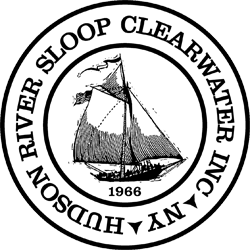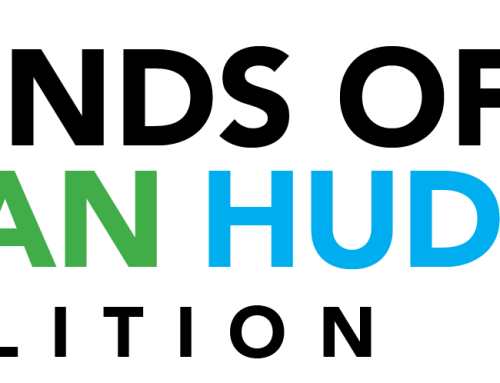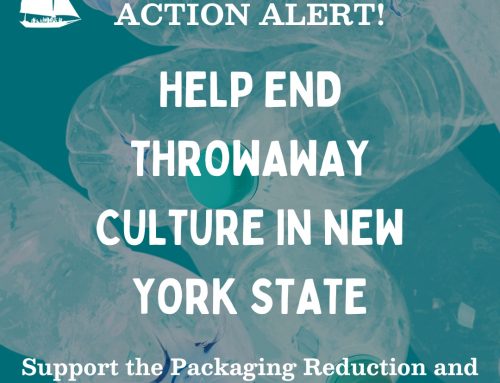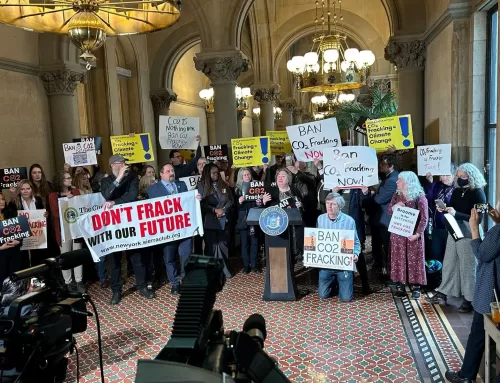By Isaac Santner, Onboard Educator
Today I want to bring you two recent stories from the last week — one from the science, and one from the humanities:
Every week, before students come, as a part of our volunteer training I hold a “Seining Extravaganza” as a way to demo our life station to the new volunteers. I take volunteers on a mission to catch as many fish as we can. Sometimes we even have to take the yawl boat to get to a good spot! Last week’s extravaganza was at the Alpine boat basin. While we seined, a couple interested children helped us out, moving our bucket back and forth, throwing back any fish too small to keep, and using the net to catch any fugitive crabs. We caught two crabs, neither of which looked extraordinary at first, but both of which turned out to be amazing teaching helpers.
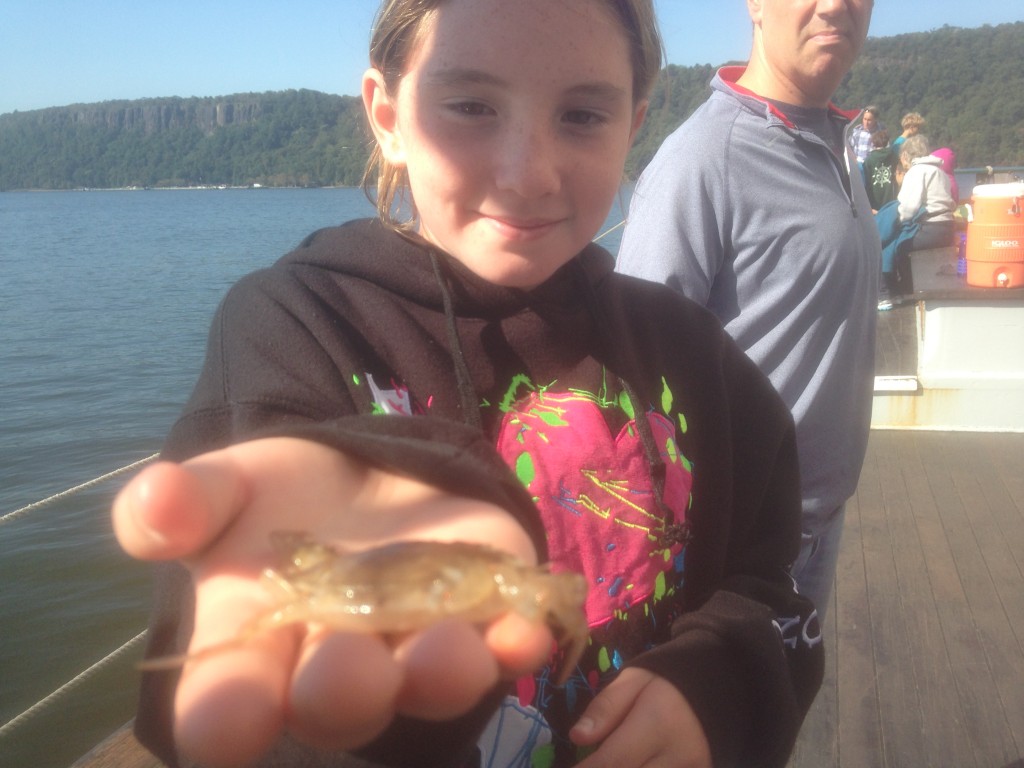 One crab had lost his claws in a battle. This meant that he was much easier to hold, and to teach students about. This allowed us to teach students a great deal about crabs without worrying about our fingers getting pinched! We also were able to watch, over the course of the week, how quickly the crab began to regenerate his claws. This is very simple biology, but very cool to show students. The second crab we caught gave us another gift — he molted two days after we caught him! Students got to see the crab, newly grown, and the tiny shell he had left behind. This allowed our life station to be immensely effective for the week, and many students were amazed by a species that we often take for granted in the Hudson Valley.
One crab had lost his claws in a battle. This meant that he was much easier to hold, and to teach students about. This allowed us to teach students a great deal about crabs without worrying about our fingers getting pinched! We also were able to watch, over the course of the week, how quickly the crab began to regenerate his claws. This is very simple biology, but very cool to show students. The second crab we caught gave us another gift — he molted two days after we caught him! Students got to see the crab, newly grown, and the tiny shell he had left behind. This allowed our life station to be immensely effective for the week, and many students were amazed by a species that we often take for granted in the Hudson Valley.
One of the many perks of my job is the ability to constantly be creative. Because of our environmental mission, there are moments onboard when we do a great deal of “sciencey” work. This is extremely engaging for many students, but what about the need to get students reading and writing? As a former (student) teacher, I have been looking for ways to include journaling, writing, and responding, to our already quite dynamic set of stations.
A way I have been looking to solve t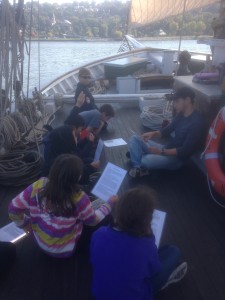 his issue is through our newest station, the “Poetry” station. Nature poetry in the northeast is legendary; look at famous transcendentalist writers and how much of their influence comes from the natural beauty of the northeast. A way we can tap into that as an experiential education tool is to bring the students to those natural areas and letting them write. Students either wrote their own completely original poetry, or they worked to create a “Found Poem” from some Hudson River primary sources. For more on found poetry, a wonderful tool for teachers of all subjects and ages, check out www.foundpoetryreview.com/about-found-poetry.
his issue is through our newest station, the “Poetry” station. Nature poetry in the northeast is legendary; look at famous transcendentalist writers and how much of their influence comes from the natural beauty of the northeast. A way we can tap into that as an experiential education tool is to bring the students to those natural areas and letting them write. Students either wrote their own completely original poetry, or they worked to create a “Found Poem” from some Hudson River primary sources. For more on found poetry, a wonderful tool for teachers of all subjects and ages, check out www.foundpoetryreview.com/about-found-poetry.
The results over the past two weeks have been really incredible! Students have created some very original and very beautiful results. Helping the students experience the Hudson from the sloop Clearwater has been a wonderful experience for me, and being able help them create their own creative work has been really valuable. I hope to continue experimenting and trying out new stations, and developing curriculum that advances students connection to the natural beauty of their homes, the Hudson Valley.
